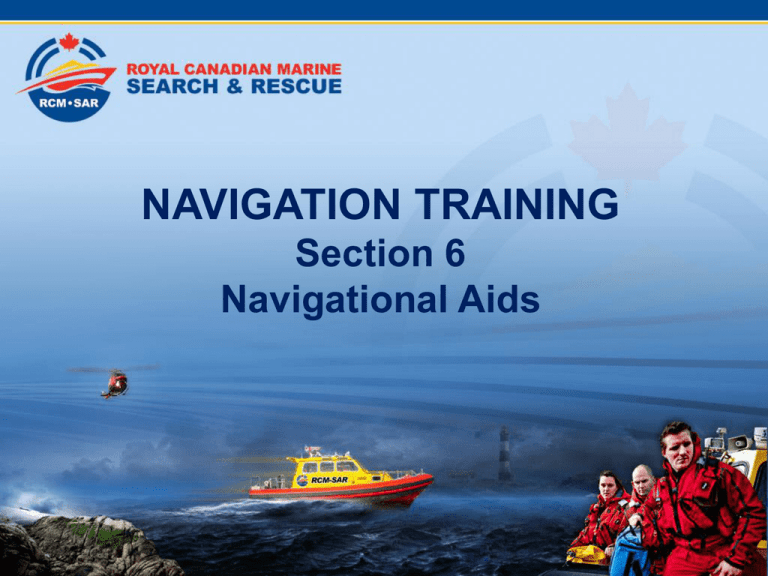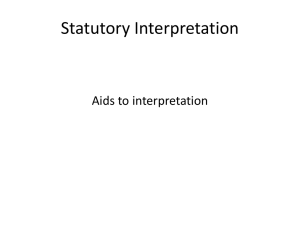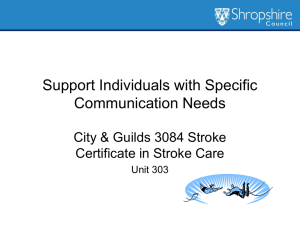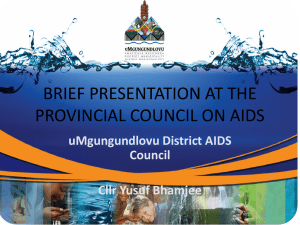07a.5 Navigational Aids
advertisement

NAVIGATION TRAINING Section 6 Navigational Aids Table of Contents • Section 1 • Section 2 • Section 3 • Section 4 • Section 5 • Section 6 • Section 7 • Section 8 • Section 9 • Section 10 • Section 11 Types of Navigation Terrestial Coordinates Charts Compass Nautical Publications Navigational Aids Buoyage Position Lines and Fixes Tides Currents Weather Navigational Aids Significance of Navigational Aids •Navigational Aid: Any device external to a vessel or aircraft intended to assist in determining position and safe course, or to warn of dangers or obstructions. Navigational Aids Navigational Aids Navigational aids will include: Lighthouses Transit Marks Leading Lines Buoyage Beacons & Day Marks Identifiable charted object Navigational Aids Positive Identification of Navigation Aids DAYTIME •Location •Shape •Colour Scheme •Auxiliary features •Special Markings NIGHT •Phase characteristic •Period & Colour Navigational Aids Positive Identification of Navigation Aids (at night) Phase Characteristics Chart Symbol Meaning Fixed F Steady, unblinking Flashing Fl Flashes at regular intervals Quick Flash Qk. Fl. Flash at least 60x/min Group Flash Gp. Fl. Group of two or more flashes Navigational Aids Positive Identification of Navigation Aids (at night) Phase Characteristics Chart Symbol Meaning Morse Code Mo. (A) Morse alpha (short/long) Occulting Occ. On longer than its off Period = Length in seconds of repetition Colour= (red, green, yellow, or white) Navigational Aids CHARACTERISTICS OF LIGHTS Flashing pattern and period (|-----|) Type Description Abbreviation Fixed A light showing continuously and steadily F Fixed and flashing A light in which a fixed light is combined with a flashing light of higher luminous intensity F Fl Flashing A flashing light in which a flash is regularly repeated (frequency not exceeding 30 flashes per minute) Fl Group flashing A flashing light in which a group of flashes, specified in number, is regularly repeated. Fl (2) Composite group flashing A light similar to a group flashing light except that successive groups in the period have different numbers of flashes Fl (2+1) Isophase A light in which all durations of light and darkness are equal Iso Single occulting An occulting light in which an eclipse, or shorter duration than the light, is regularly repeated. Oc Group occulting An occulting light in which a group of eclipses, specified in number, is regularly repeated. Oc (2) Composite group occulting A light, similar to a group occulting light, except that successive groups in a period have different numbers of eclipses Oc (2+1) Quick A quick light in which a flash is regularly repeated at a rate of 60 flashes per minute Q Interrupted quick A quick light in which the sequence of flashes is interrupted by regularly repeated eclipses of constant and long duration lQ Group quick A group of 2 or more quick flashes, specified in number, which are regularly repeated. (Not used in the waters of the United States.) Q(3) Morse code A light in which lights of two clearly different durations (dots and dashes) are grouped to represent a character or characters in the Morse code. Alternating A light showing different colours alternately Al RW Long flashing A flashing light in which the flash is 2 seconds or longer LFl Mo (A) Navigational Aids Special Purpose Lights Sector Lights • Red light used in dangerous sectors • Sector limits are expressed in degrees true as observed from a vessel, not from the light! Navigational Aids Other Navigational Aids Other navigational aids, providing they are charted, will include: Navigational Aids Navigation Marks and Buoyage Navigational Aids Determining the Computed Visibility of a NavAid Horizon distance = the line of sight from a position above the earth’s surface to the visual horizon. Geographic range = the maximum distance that a light may be seen in perfect visibility by an observer’s eye who is at sea level Bella Bella Navigational Aids Determining the Computed Visibility of a NavAid Computed range = the distance at which a light could be seen in perfect visibility (taking into account elevation, observer’s height of eye, and the curvature of the earth). Computed Range = Horizon Distance + Geographic Distance Bella Bella Navigational Aids Determining the Computed Visibility of a NavAid Computed range = the distance at which a light could be seen in perfect visibility (taking into account elevation, observer’s height of eye, and the curvature of the earth). Computed Range = Horizon Distance + Geographic Distance Navigational Aids Determining the Computed Visibility of a NavAid Computed visibility = The maximum distance at which a light can be seen in the current meteorological conditions. Luminous range = the maximum distance at which a light may be seen under under the current meteorological conditions. Nominal range = a special case of the luminous range. It is the distance a light could be seen in “clear” weather. Also called the charted range. Navigational Aids









